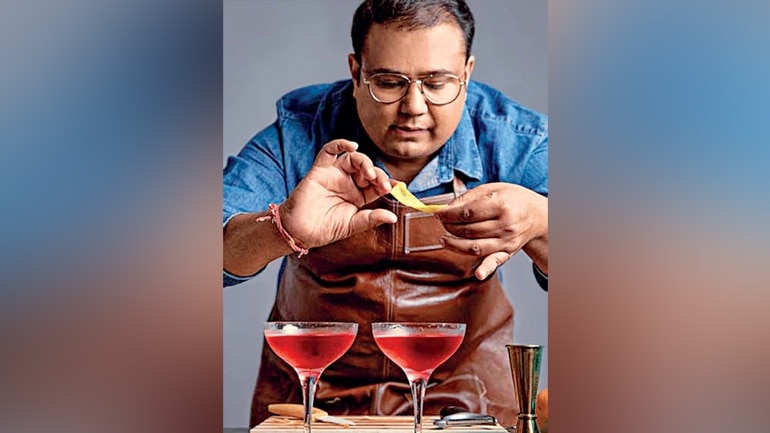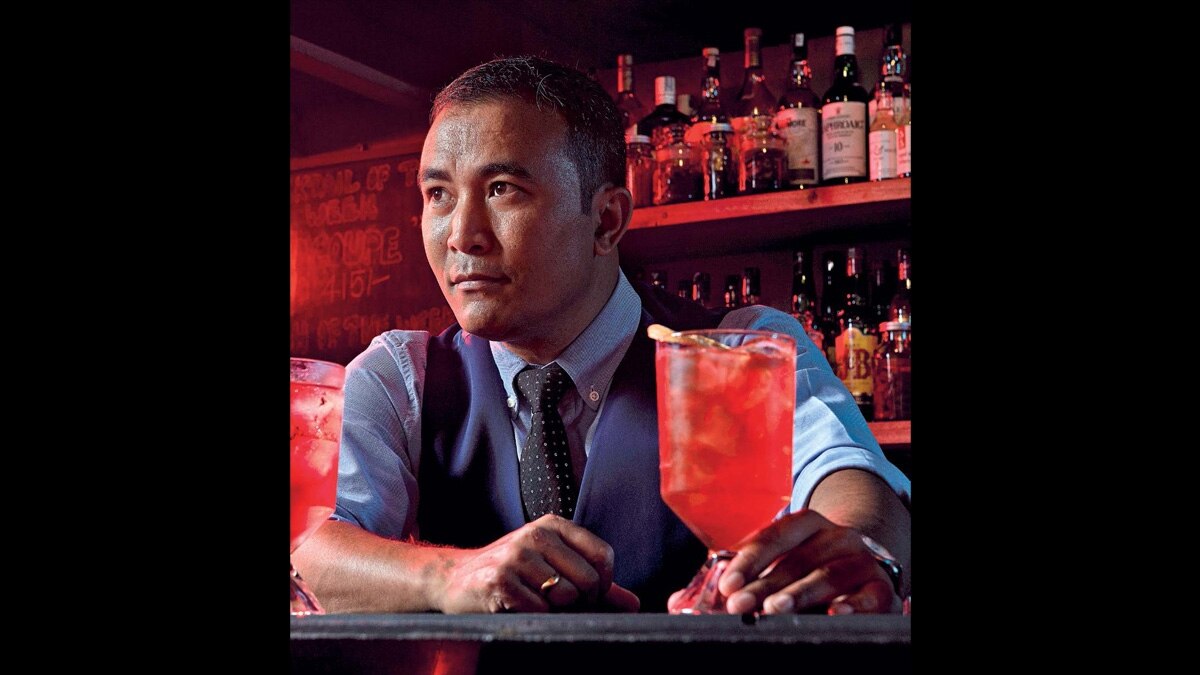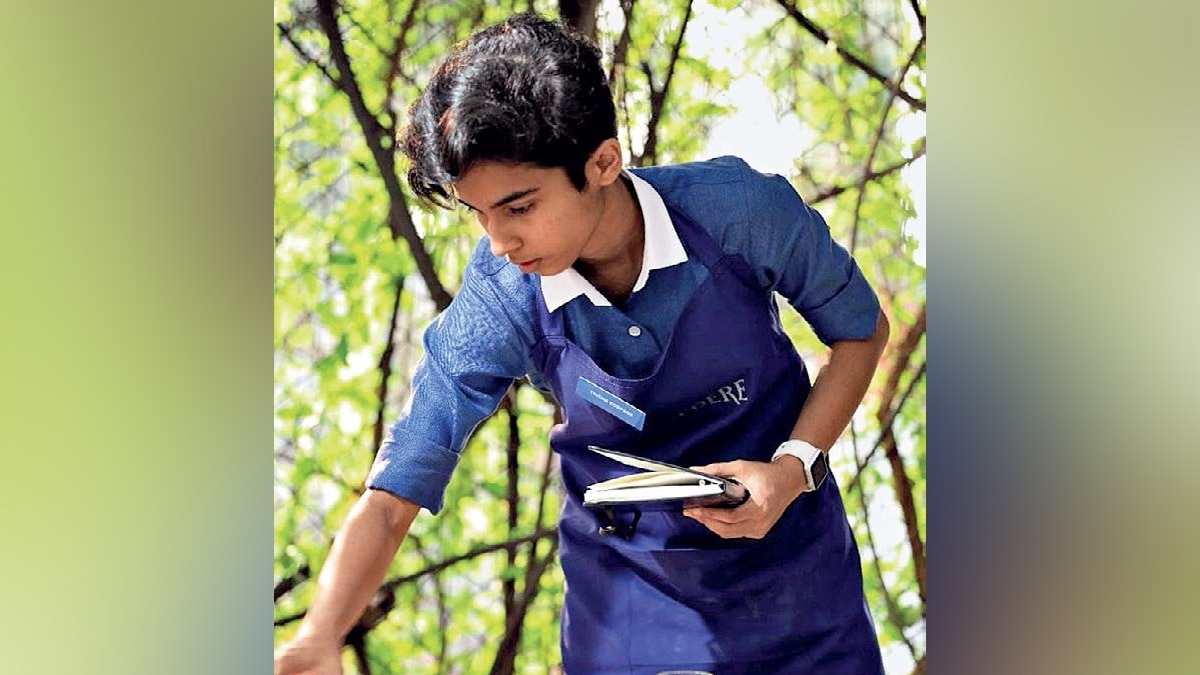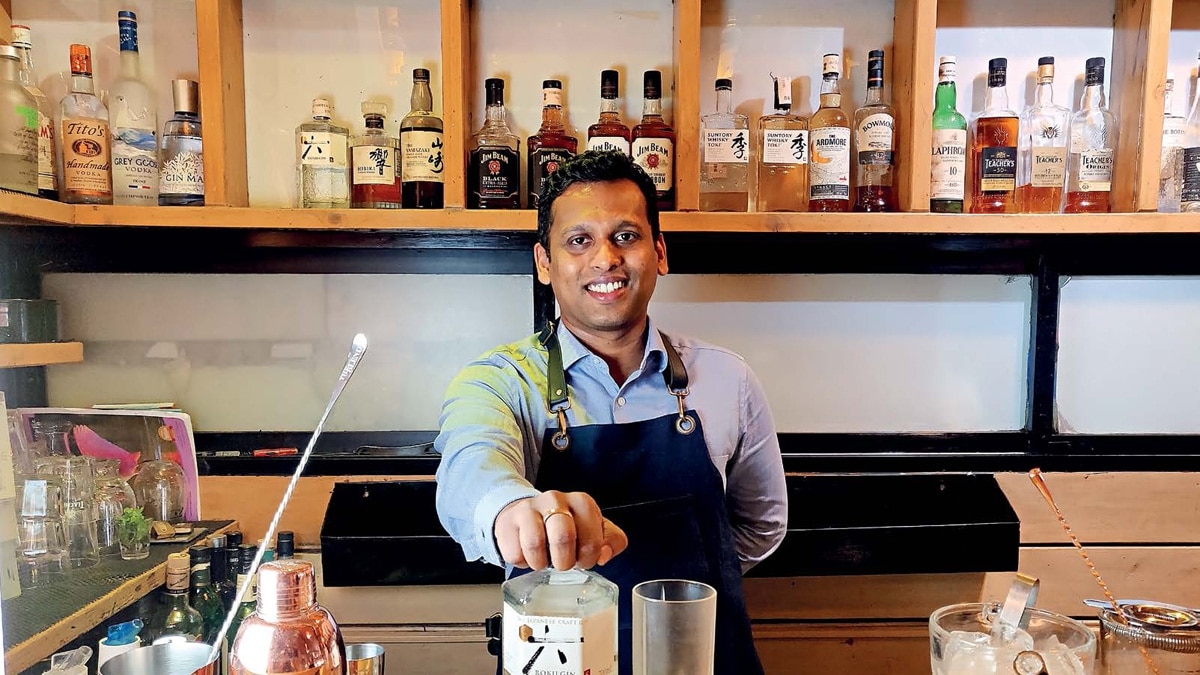

Last April, Ajesh Joseph, head mixologist at Jetlag, Bengaluru, posted a video of himself zooming, literally, up and down a hallway, draped over a wheelie bin. It was captioned ‘Quarantine day 10’. He subsequently shared a slapstick routine, set to the Pink Panther theme, on quarantine cocktail-making, peering Clouseau-like into empty bottles, scraping at a desiccated lime. The video racked up thousands of views and Joseph continues to make skits about bar life, touching on flairing fails, workplace romance and pandemic protocol.
Besides an alchemist’s steady hand and magician’s showmanship, an integral part of bartending is audience engagement, whether it’s storytelling to upsell a cocktail or lending a sympathetic ear to that bottomless boozer at the counter. “It’s not just about cocktails,” says Yangdup Lama, a pioneering bartender who has co-founded two establishments in Delhi. “There’s marketing involved. Someone may not be a rock star behind the bar, but knows how to use social media really well.”

Indian bartenders have long used these engagement skills to promote alcohol brands or their employers. These associations could be empowering; ambassador programmes and competitions have fostered a community and enabled mobility. Mixologist Varun Sudhakar recalls that his parents in Kerala “were unable to tell people what my profession was” until newsclips about his victories in competitions like Diageo’s World Class appeared. But as Priyanka Blah, founder-editor of The Dram Attic, says, “For the longest time, brands have dictated the conversation, the bartender has been the tool.”

While their own brand-building was largely via word-of-mouth, top bartenders have increasingly been working as consultants in recent years. With the industry benched during the pandemic, social media accelerated the trend. Four months ago, Sudhakar left his job at a restaurant group to start consulting company Bar Bundle. “For some, it did make business sense to move out of their comfort zone and think about a more sustainable business model,” says Pankaj Balachandran, who has a diverse basket of projects. He opened his own bar in Goa last December. With serving restrictions in place, bartenders (and bars) launched toolkits and mixers, capitalising on trends of self-sufficiency and sustainability. They include Trisha Koparde, who left her job at Bombay Canteen to co-launch Saray & Co, and flair bartender Ami Shroff, who co-founded minimal-waste brand Mixed by Ami. Feruzan Bilimoria, an ambassador for Stranger & Sons, says even spirit brands have focused training around such trends, spotlighting pickles and cordials with long shelf lives. Others launched mixology or alcohol delivery apps.

Blah noticed “the community is not as dependent on brands as I thought. Bartenders have realised there’s so much they can do outside the limitations of their job”. It was a trial by fire, but social media-savvy bartenders forged a direct link to drinkers, through live-streaming and online workshops. Some, like Nitin Tewari, co-founder of Delhi’s Together at 12th, posted daily cocktails, upping their photography skills. “People in the hospitality industry are not used to sitting idle,” Tewari says. Vikas Kumar at PDA posted daily to “remind” patrons of the bar. Lama’s company cracked corporate workshops and started a YouTube channel. This knowledge-sharing relationship, Lama says, is contingent on the rapid growth of craft cocktail culture, and feeds back into the trend. He believes that over the pandemic, people have shifted from straight drinks to mixed ones at a “threefold” pace.

Social media also helped the community connect with itself, expediting financial relief efforts by industry associations and nurturing an ecosystem of boosts and challenges. Vedant Mehra, a Greater Than gin ambassador, posted India-specific bartending memes on Instagram “out of sheer boredom. The only way I could deal with it was to laugh about it,” he says. Other bartenders laughed along. One of Mehra’s videos for Greater Than is a shirtless ‘naked’ gin challenge. Soon Joseph responded with a spoof attempt to ‘challenge’ a female colleague.
Such videos are inclusive, relying on music and effects changes. Blah believes the language confidence barrier is eroding, encouraged by “bartenders from all over the world who don’t speak English and are doing really well for themselves”, she says. Still, while self-branding expands online, the shift towards celebrity bartender-driven businesses is slow. Balachandran estimates that at 90 per cent of venues, “people feel the bartender is a server and his job is to make a whiskey soda”. Evonne Eadie, an Australian Diageo brand ambassador in Mumbai, agrees that while one may “pinpoint” Indian bars “which are on par if not beyond” international ones, “it’s about raising the standard of the entirety. There’s a vast gap”. Briefly removing the bar environment from the equation has, hopefully, opened new lines of communication. Lama says, “People will be more confident chatting up the bartender before ordering a drink. Because they know the guy on the other side is not just an order-taker.”
read the full story about Mixing It Up
#theheadlines #breakingnews #headlinenews #newstoday #latestnews #aajtak #ndtv #timesofindia #indiannews

Leave a Reply